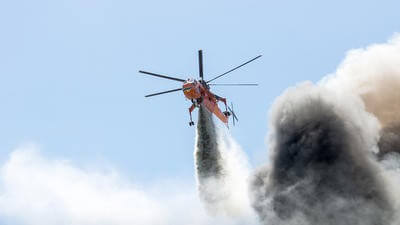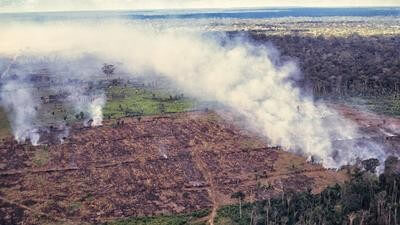Preparing for more severe fire seasons: the southern hemisphere

Continuing our series on aerial firefighting asset management, Mario Pierobon focuses on the southern hemisphere and asks how those responsible for fighting wildfires make sure they have the resources available to last the season
It is a common experience that climate change has made fire seasons longer and more severe, and governments and service providers are adjusting strategies and tactics to prepare for more severe fire seasons. Following on from earlier reviews on efforts in Europe and the Middle East, in this feature we have reached out to industry experts for an overview of the resources and assets available, the sharing of resources and skills, and the development of state contracts and fleets in countries of the southern hemisphere.
Firefighting resources and assets
Fire and Emergency New Zealand is the agency responsible for managing and fighting wildfires in New Zealand and it uses aerial firefighting resources on a ‘call when needed service’, explained Steph Rotarangi, Deputy Chief Executive of Service Delivery Design at Fire and Emergency New Zealand. “We have contracts in place with over 85 aviation service providers and approximately 240 aircraft that are available for use nationally. There is a range of fixed-wing and rotary aircraft we can call upon to use,” she said. “We have no large aerial tanker capability within New Zealand but have the option of requesting these from our Australasian Fire and Emergency Service Authorities Council (AFAC) partners in Australia if the need arises. We have the national Air Desk, which uses the ARENA cloud-based system for the management and dispatch of aircraft. ARENA is managed by the National Aerial Firefighting Centre (NAFC) on behalf of its members across the states and territories of Australia and New Zealand. We have seen a steady increase in the use of aircraft to assist in the control and containment of wildfires, and this trend is set to continue.”
According to Loreto Moraga, President of the Asociación Chilena de Helicópteros, the fleet of Chile consists of fixed- and rotary-wing aircraft in the light and medium categories, which are distributed throughout the central and southern areas of the country. “In addition, there is a fleet of foreign aircraft that come to work during the fire season with aircraft from the same segments and helicopters of the heavy category. All of these aircraft are owned by commercial operators who compete in tenders carried out by the public forest fire prevention agency CONAF [Corporación Nacional Forestal] and also by forestry companies,” she said. “This makes up two fleets of aircraft that act with protocols that allow their joint action whenever necessary to fight fires on public or private property that threaten the population, as 42 per cent of fires occur in the urban interface zone, between a forest and a city.”
There is a fleet of foreign aircraft that come to work during the fire season with aircraft from the same segments and helicopters of the heavy category
In the last fire season of Chile, from October 2022 to May 2023, there were 124 aircraft, which were reinforced by the armed forces and police aircraft when necessary. “Since 2017, when category six fires were recorded in Chile with temperatures and speeds of advancement which were then unknown, the fleet was increased, protocols were restructured, and the entire emergency system of the country was modified,” explained Moraga. “The institutional framework for the coordination of large institutions today is entrusted with greater legal powers, and the level of coordination ranges from large institutions at the national level to small neighborhood-level organizations.”
According to Pablo Lobos, Forest Fire Protection Manager at CONAF, the evolution in the acquisition and number of aircraft that are contracted has been exponential in recent years since the season known as the ‘fire storm’. “Based on this, significant progress has been made in terms of operational safety, which is a fundamental need in this sense,” he said. “For this reason we have worked together with the aviation authority of our country in terms of air coordination and protocols which are unique and transversal for all aircraft that carry out aerial work to extinguish forest fires.”

Sharing of resources and skills
The switch between seasons allows a transfer of fleets between the northern and southern hemispheres, affirmed Moraga. “In the case of Chile, they arrive largely as a result of the need for general support and the lack of heavy category aircraft,” she said. “Chile has open skies so entry is expeditious; however, we have an asymmetry in sending Chilean fleets and crews to other countries because there is no reciprocity in this matter and there are operating restrictions – which put the protection of operators before the public need to fight fires and receive assistance in emergency situations. That is something that should be reviewed at an international level.”
In Argentina, it is possible to have a double season with North America, Europe and Asia, noted Roberto Tomassoni, owner of Falconer Aviation. “Today our legislation does not allow the entry of foreign aircraft since we do not have open skies – aircraft from another country may only enter in case of a fire emergency,” he said. “Our aircraft can be operated in other countries with Argentinian pilots without problems. Argentina has more communication and affinity with Chile and Spain since it shares the type of aircraft that are used. Argentinian pilots usually do work during times of fire in both of these countries.”
Our aircraft can be operated in other countries with Argentinian pilots without problems
Given its geographic location, New Zealand does witness a significant sharing of resources and skills between the hemispheres, affirmed Rotarangi. “There is a steady flow of pilots who go overseas to assist in firefighting operations, and they bring that knowledge and experience back into New Zealand. Given the seasonal time differences, this does not have a significant impact on our operations,” she said. “We have deployed aviation specialists along with incident management team specialists to support overseas firefighting operations as part of our international agreements. Most recently we deployed an air operations branch director and a helicopter coordinator to the Northwest Territories in Canada to relieve Canadian personnel fighting wildfires.”
Many of the foreign companies that work in Chile have the least risk in their country when they bring their aircraft to Chile, said Lobos. “This allows most pilots to maintain their capabilities and skills as they continue to stay in flight; furthermore, any new knowledge they can obtain in other systems is brought to the country and presented for the professional growth of their colleagues,” he pointed out.
Moraga noted that as a result of climate change, fire seasons are increasingly longer. “This has made it difficult to have fleets on time when fleets are moving from one hemisphere to another, as they go gradually leaving their respective seasons. All this has made fleet contracting, maintenance planning, and crew shifts more complex,” she said.

Development of state contracts and fleets
More severe fire seasons in the southern hemisphere are leading to changes in state contracts, fleets, and emergency management in general. Rotarangi highlights that the formation of a national approach to aviation management for aircraft resources and dispatch has been the main development for Fire and Emergency New Zealand. “This has fundamentally changed how we conduct business, given time back to operational managers on the ground, and has made the use of aircraft for firefighting safer, effective, and more efficient,” she affirmed.
Fire and Emergency New Zealand was established under legislation in July 2017 bringing together over 40 separate firefighting organizations and 14,000 volunteer and career firefighters and support staff. “The impact of climate change, new technology, and a changing population has provided new challenges for communities,” said Rotarangi. “Fire and Emergency New Zealand is building the capabilities and subject matter expertise needed to quickly respond to more severe weather conditions and the range of emergencies across the country.”
The country has reacted to fires of new magnitudes and, by providing more economic resources, it has adjusted emergency institutions and applied controls to prevent intentional or negligent fire
CONAF works via public bidding to put together its operational plan. However, when necessary, in extreme situations and under a state of catastrophe in a season of high severity, extraordinary direct contracting of combat aircraft services is carried out, which in many situations comes from other countries to support the emergency in Chile, explained Lobos. “Greater resilience is being incorporated into the field of firefighting. In recent years, in different lines of work and together with the aviation authority, studies have been carried out regarding resilience, such as studies of flight and duty periods of service, and fatigue in fire extinguishing operations. All this with the objective of allowing us to improve operational safety from a predictive rather than reactive perspective,” he said.
Chile is used to living with natural disasters, and, culturally, it has a resilient population, said Moraga. “Nevertheless, the challenges that the fires have imposed in recent years have been extreme. The country has reacted to fires of new magnitudes and, by providing more economic resources, it has adjusted emergency institutions and applied controls to prevent intentional or negligent fire,” she said. “However, these efforts are sometimes insufficient because the number of fire outbreaks has exceeded the surveillance capabilities implemented. Nowadays the prevention factor is key because once the fire starts, the weather conditions transform it into a lethal inferno.”

December 2023
Issue
In the December edition, we cover personal locator beacons to aid with rescue; rescue operations in Mediterranean Sea; preparation for southern hemisphere fire seasons; and the value of sleep and rest for safe operations; plus more of our regular content.
Mario Pierobon
Mario Pierobon is a safety management consultant and content producer. He writes extensively about aviation safety and has in-depth knowledge of the European aviation safety regulations on both fixed and rotary wing operations. His rotary wing expertise is concerned primarily with specialised operations and the operations requiring specific approval, such as HEMS, hoist operations and performance-based navigation.

